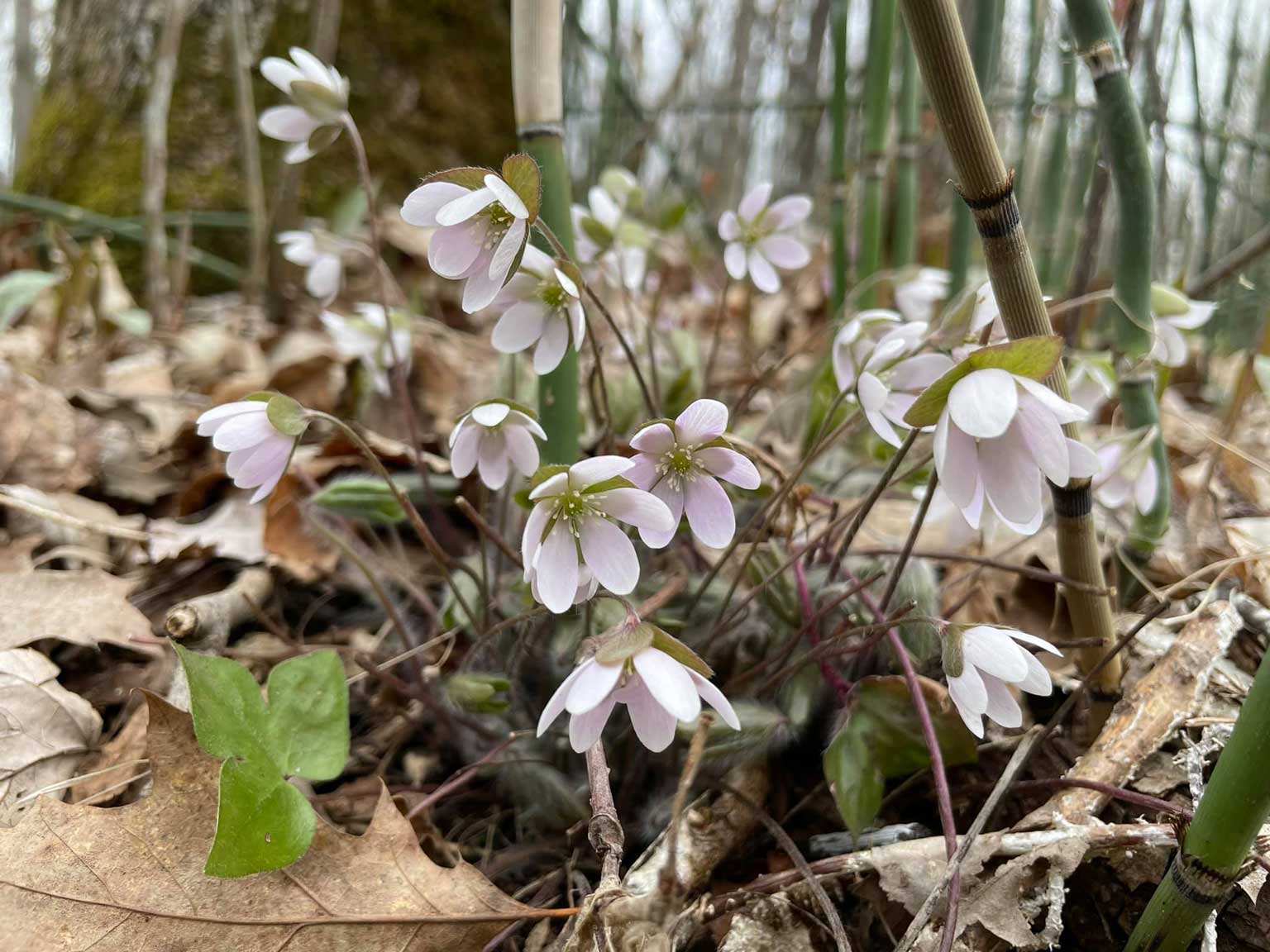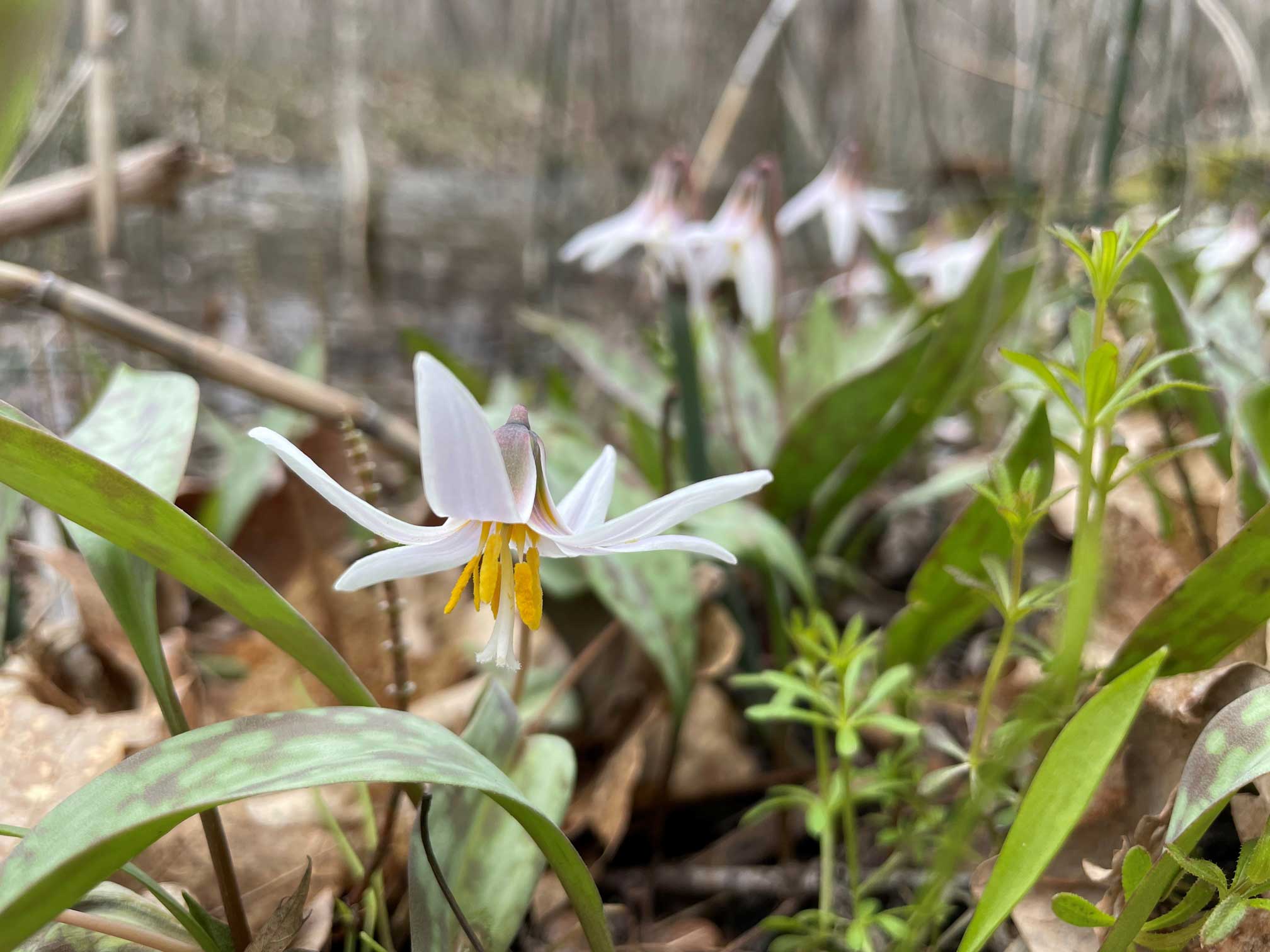One of Nature’s Harbingers of Spring: State Park Wildflowers
By Minnesota Department of Natural Resources
During her career as a naturalist for Minnesota Parks and Trails, Megan Johnsen eagerly observed the many wildflower species that bloomed in the parks where she worked. A naturalist’s job is to educate park visitors, helping them enjoy natural resources with conservation in mind. Those visitors anxiously anticipate the arrival of spring wildflowers, which proclaim winter’s departure. Seasons blend as the first blooms emerge from the melting snow and subsequent waves usher the forest from brown to green.
Johnsen, who now works as an exhibit developer for the Parks and Trails Division, has observed this transition for years at Banning State Park off Interstate 35, north of Hinckley. She encourages park visitors to make more than one visit in the spring wildflower season because plant species bloom at different times.
“Multiple visits allow you to watch the growth progression,” she said. “The same spot might look totally different in a week’s time.” Beginning with the skunk cabbage plant’s stinky flower in a mysterious flame-shaped fortress, these blossoms carry us through the final days of cold to the intoxicating hopefulness of spring.
Johnsen’s favorite flower patch is along the 1.8-mile Quarry Loop Trail at Banning State Park. Walking just half a mile from the picnic area, hikers will find a seasonal waterfall tumbling down a rocky hillside. A boardwalk protects both hikers’ footwear and the fragile plants covering a forest floor. Look for hepatica, an early bloomer tucked among last year’s fallen leaves. The small, elegant purple flowers can be found in woodlands stretching from Minnesota to Maine, and down the eastern coast to Florida and west to Alabama.
The third course for spring pollinators is a pairing of trout lily and trillium, both abundant at Banning State Park. The trout lilies appear as a carpet of green speckled leaves with yellow or white flowers that change colors over the season. Trillium’s large blossoms blush from white to pink during their brief few weeks in bloom. This park is so well known for its flowers, it has trails named for them. Bring mud boots for the soggy Skunk Cabbage Trail and branch off onto the wooded Trillium Trail.
The best time to observe the early plant life at Banning State Park is on a weekday, since weekends tend to attract crowds of visitors. Johnsen cautions hikers to always stay on the trail for safety. Spring is an active time for ticks, which are most likely to hitch a ride on people and pets if you explore off the maintained trail. Staying on the trail also protects the delicate plants.
“If you walk off trail to get to a hepatica flower, you are likely crushing spring beauties and trout lilies that have not bloomed yet,” she said. “We also never pick spring wildflowers. They need to live out their life cycle to continue as a species and provide for pollinators that are critical to our environment.” Another reason not to pick the flowers is so very visitor after you can enjoy the same view.
To learn which flowers are blooming at a Minnesota state park, check the park website visitor alert, or call the park office.
Images courtesy of the Minnesota DNR Staff.

























